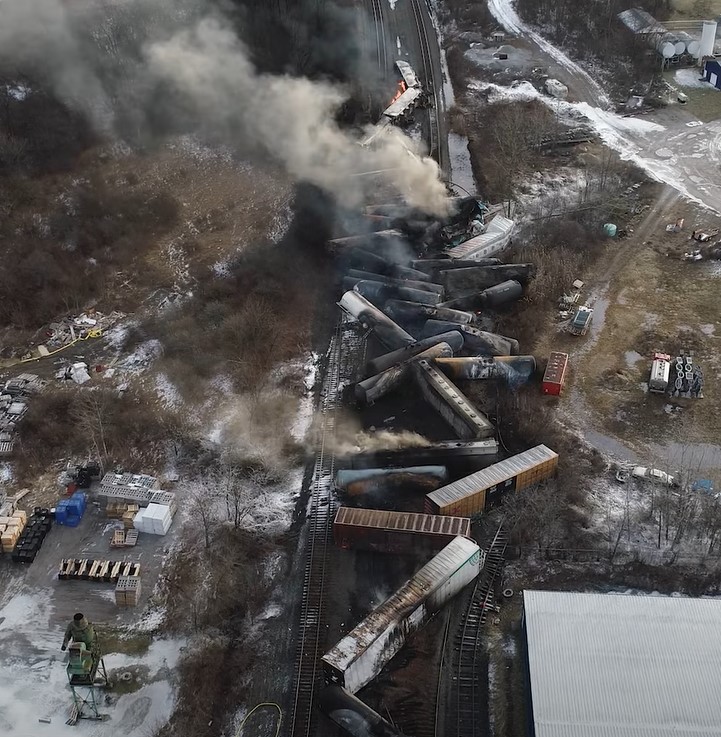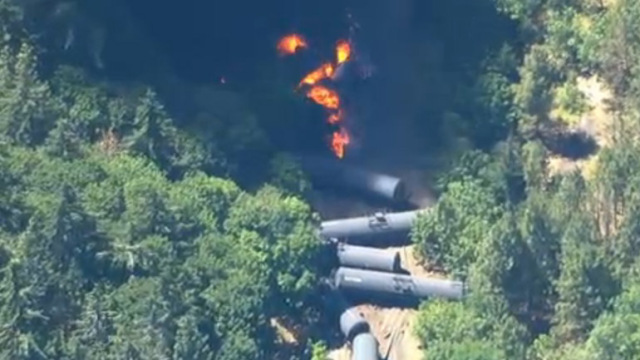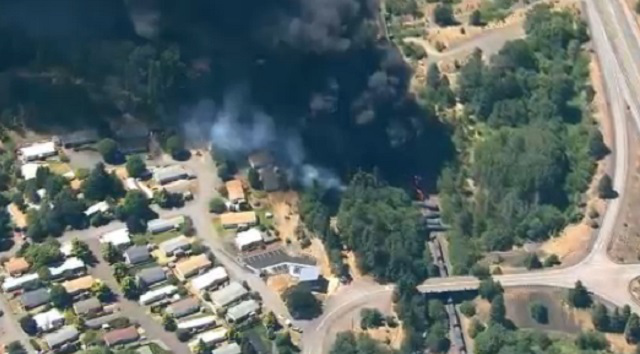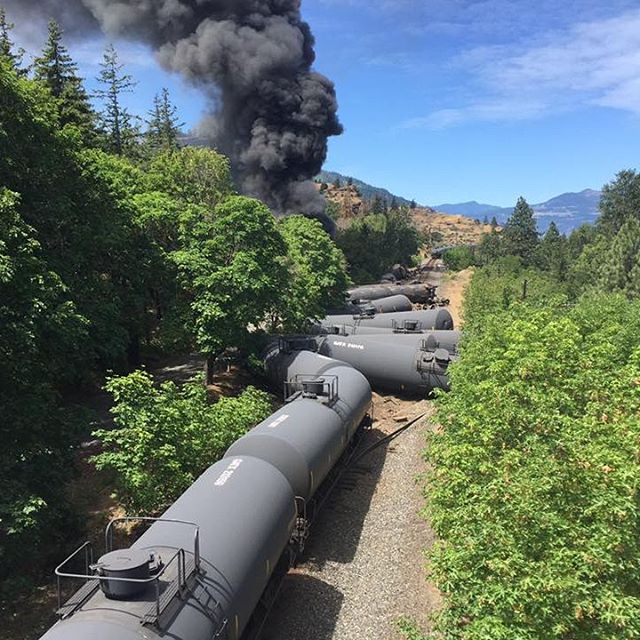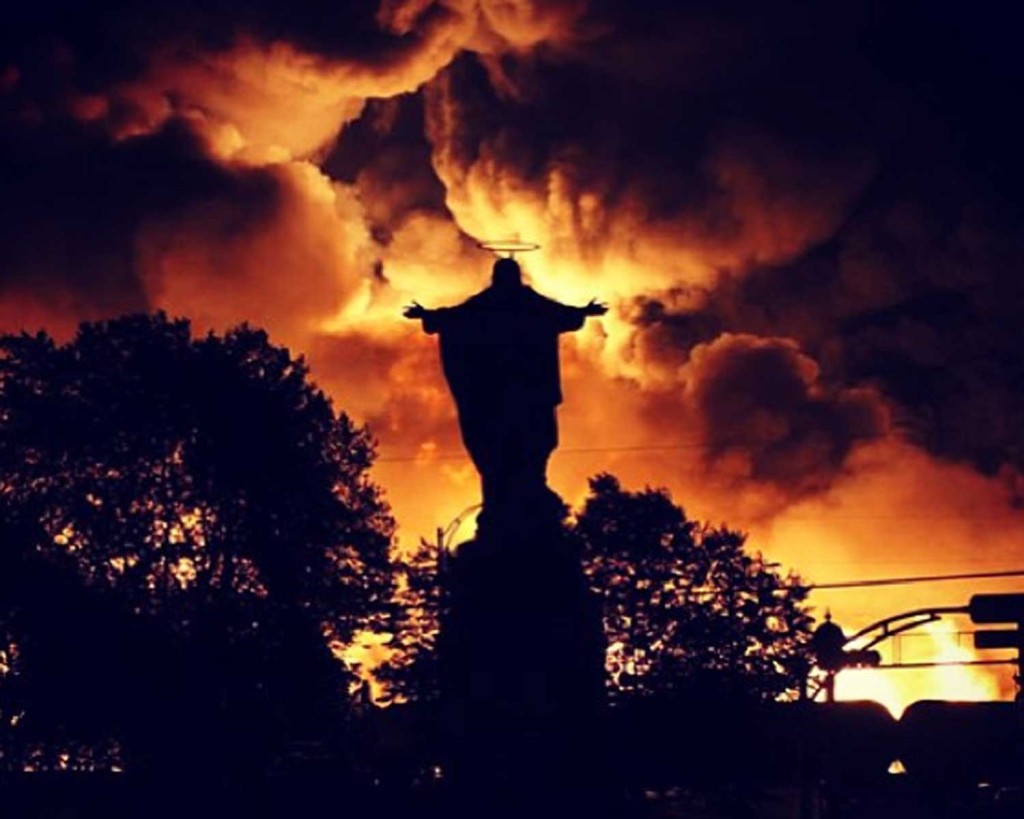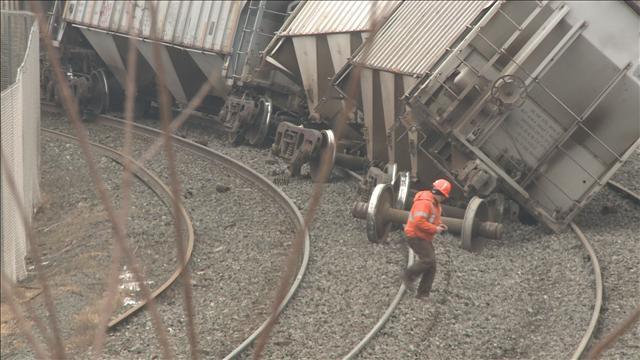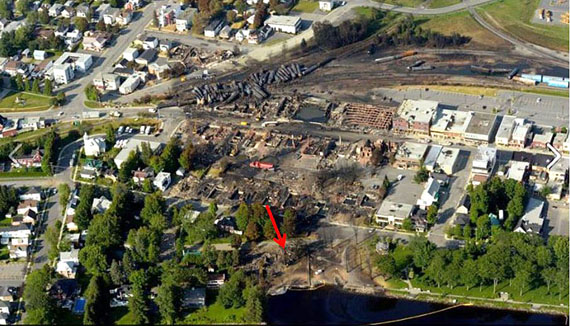Butyl acrylate in water — obscene
February 16th, 2023
Do tell, what amount is “SAFE,” pray tell? Vinyl chloride? Butyl acrylate? Other chemicals?”

I’d guess that this will go beyond civil suits, administrative requirement of clean up (as if that’s possible) and that there will be criminal charges.
The impacts of the East Palestine, Ohio, derailment, tank ruptures, and explosion continue, and it’s showing up in nearby water supplies:

Ohio city says butyl acrylate tested positive in water intake
The NOAA modeling has disappeared, it’s not at any of the links I’ve found. HERE IS SOME REDDIT on this model, and note of its disappearance. I gave up looking, it’s GONE.
Angry and scared, Ohio residents question response to toxic derailment
In a letter to Shaw this week, Pennsylvania Gov. Josh Shapiro (D) accused the rail company of giving him and other officials inaccurate information as they were trying to decide whether to allow toxic vinyl chloride from five rail cars to be released into the air — and said the company’s mismanagement of the immediate response put first-responders and residents at risk.
As Ohio Gov. DeWine says Ohio doesn’t need federal help:
Pa. governor accuses train company of mishandling Ohio derailment
Life After the Ohio Train Derailment: Trouble Breathing, Dying Animals, and Saying Goodbye:
After an initial $25,000 donation to the community, the company said they would give $1,000 “inconvenience checks” to residents within the evacuation zone; the company also has offered to reimburse expense receipts for residents within East Palestine
$1,000 down payment and reimbursement to residents, a start towards what will be a very high bill.
‘This is absurd’: Train cars that derailed in Ohio were labeled non-hazardous
Another exploding oil train — Oregon this time
June 3rd, 2016
It’s happened again, this time on the other end of the country, in Oregon in the Columbia Gorge, near the river and near homes in Mosier, OR, where the derailment occurred. Oil has leaked, exploded in flames, and at least 8-10 cars are derailed.
Oregon train derailment spills oil, sparks fire
Oil train derails, on fire in Columbia River Gorge
Oil train derails near Mosier, Oregon, smoke visible for miles
Oil train derailment, fire in Columbia Gorge evacuates Mosier schools, I-84 shut down
Bakken BOOM and rail safety
April 17th, 2014
There are more and more aspects of rail safety coming into question as people learn about life with the many Bakken oil trains rolling through our communities.
What about the greatly increased air emissions due to the increased rail traffic? Locomotive emissions are regulated:
The short version, from the EPA:
General Information
- Fact Sheet: Control of Emissions from Idling Locomotives (PDF) (4 pp, 143K, EPA-420-F-13-050, December 2013)
- Fact Sheet: Federal Preemption of State and Local Standards for Locomotives (PDF) (3 pp, 11K, EPA420-F-97-050, December 1997)
- Summary of emission standards
That regulates individual locomotives, but how are the cumulative impacts of so many trains addressed, particularly in the Mississippi River Valley, the “land of inversions?”
There’s continued talk about the new DOT111 rail cars, but how will that address the problem of volatility, that the Bakken crude contains a much higher level of gas than other crude, and that although regulators have said that the Bakken crude should be degasified before it is shipped, whether by rail or pipeline, this is not yet incorporated into standard practice. And it bears repeating — this is an issue for Bakken crude in pipelines! Pipelines are not a miracle cure for the Bakken crude volatility problem!
It can happen here. It has happened here. It will happen here. What do we do to protect ourselves?
This is a train incident in September, 2013 just across the river in Hager City, WI:
And in Red Wing:
A Wisconsin town’s fire chief was part of a discussion with U.S. Rep. Ron Kind recently regarding rail safety. The station is one block from the river and the railroad tracks. Congressman Kind asked the fire chief what the impact of a Bakken oil wreck would be on his community, if the fire unit could respond, and the fire chief said, “I doubt it, we’d be vaporized.”
If a Lac Megantic level explosion occurred in Red Wing, presuming that buildings two blocks from the explosion would be leveled, and maybe three blocks, it would reach to Main Street, and perhaps the block beyond:
This is how it is in all the communities along the Mississippi River, a disaster waiting to happen for us, for the River.
There’s a reason it’s called the “Bakken Boom.” BOOM!
And in the La Crosse Tribune:
Meeting set on rail expansion
plan
5 hours ago • BETSY BLOOM bbloom@lacrossetribune.com


